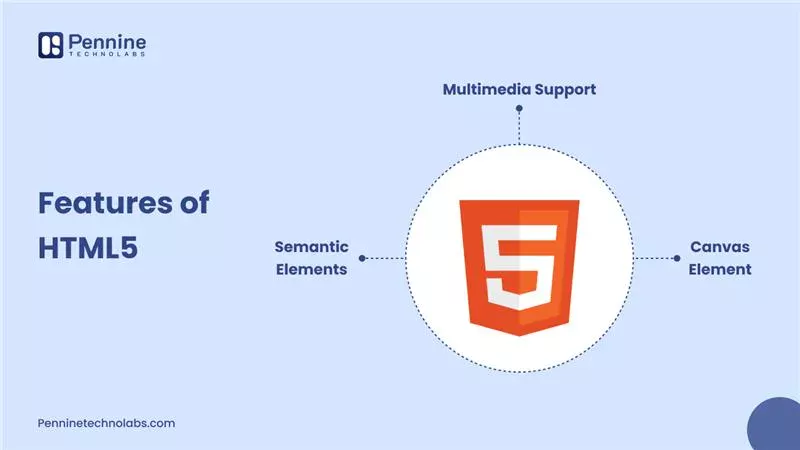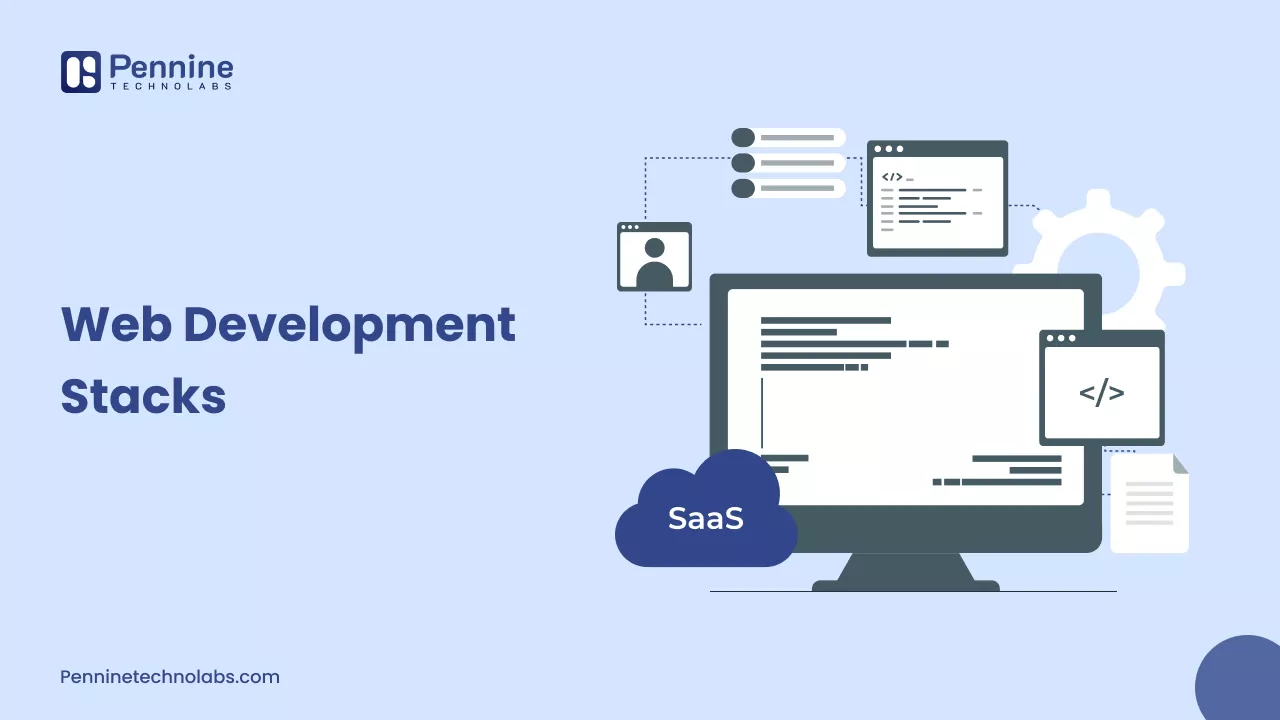Quick Summary: We examine the necessary features that make HTML5 the backbone of dynamic, responsive, and search-friendly websites. You will learn how native multimedia support, semantic markup, powerful new form elements, and offline capabilities work together to create a better user experience. This guide provides you with the tools to leverage HTML5 for enhanced performance, improved interaction, and robust SEO, ensuring your site remains competitive in today’s digital landscape.
When you use the web today, you are looking at a digital world operated by advanced software tools that make interaction easy. HTML5 is at the centre of this revolution. Not only launched as another upgrade, HTML5 is more like a complete web development that turned the stable, boring websites into vibrant, interactive spaces. Therefore, if you want your content to grab your readers’ attention and, yes, rank on Google and Bing, understand the real characteristics of HTML5 where you start.
What is HTML5?
At its core, HTML5 is the fifth major release of Hypertext Markup Language. This may seem technical, but it now crafts beautiful sites, creates attractive apps, and designs that are responsive and work on every comprehensible device.
Those days are gone when you needed endless plugins to play video or audio clips in your browser. With HTML5, it is all built in the right way.
The Standout Features of HTML5 That Matter to You
1. Support for Multimedia
Remember those years when you landed on a website and needed a “Flash player” or some other plugin? Thankfully, HTML5 eliminated all that. Now you can embed audio and video directly in your web pages. Your visitors only play. No additional download, no technical headache.
- <audio> and <video> tag streaming makes media easy
- Platforms like YouTube dropped Flash and switched to HTML5 years ago, due to concerns over reliability and trust.
It is not just about the convenience. Google favors pages that load quickly and avoid unnecessary third-party plugins.
2. Cleaner, Semantic Markup
One of the most powerful changes is the semantic element brought to the HTML5 development. The unnecessary <div> tags are of no use. Now, you can label your page sections with purposeful tags such as <header>, <footer>, <main>, <article>, <section>, and <nav>. These tags make your code clean and better for search engines crawling your website and content.
Semantic HTML Markup is a game-changer for SEO. Google’s bots understand your page better, which in turn improves your ranking.
3. Enhanced Forms for Real Interaction
HTML5 Supercharged Web Form. Now you can collect data more effectively, without relying on a dozen different scripts.
- New input types, including Search, Email, Date, Range, Color, and more, are now standard and instantly valid in browsers.
- Built-in verification means fewer mistakes and a smooth experience for your visitors.
When someone fills out your contact form, the likelihood of an error drops significantly, which means fewer lost leads.
4. Graphics and Animations with Canvas and SVG
Modern web design is not only about static images. HTML5 introduced the <canvas> element and SVG (scalable vector graphics), allowing you to add dynamic charts, custom graphics, and even simple games, without needing a custom plugin.
- Real-time graphics for dashboard and interactive UI
- SVG graphics for any size, being crisp, are perfect for mobile users
5. Offline Capabilities: AppCache and Service Workers
Today, users expect websites and apps to function smoothly even with an imperfect connection. HTML5 is very open with development, giving you offline access to the content via the application cache (AppCache) and, recently, to service workers.
- Store significant assets locally so that your site is loaded, even if the signals drop.
- Service Workers can pre-cache pages and assets, which can enable features like push notifications and background syncing.
This makes your website feel like a true app – a significant plus in Google’s eyes.
6. Geolocation API
Personalization is supreme, whether you are running an e-commerce store or a travel agency site. The Geolocation API of HTML5 allows a site to find a user’s location (with their permission, naturally). It opens endless options to show local content or targeted Google Ads.
7. Web Storage: LocalStorage and SessionStorage
Cookies have always felt a little clunky for storing user data. HTML5 introduced LocalStorage and SessionStorage, making it easy for the server to collect large amounts of data correctly in the user’s browser. It is fast, safe, and has minimal intrusion, compared to cookie overload.
Store user preferences or shopping cart content when they come back
There is no need to send everything to the server for simple tasks
Why Does HTML5 Matter for SEO and User Experience?
All these features are not only about the following trends – they are about the creation of websites that perform, attach, and convert. Search engines love fast, accessible, and interactive pages. Users recall websites where things work, no nuisance, no downloads, no confusion.
If your goal is to rank on Google AI and ChatGPT and to connect with your audience meaningfully, leverage the real power of HTML5.
Practical Advice for Adapting HTML5 Today
- Always use semantic tags: Forget <div class=“header“>. Use <header> and help both Google and readers.
- Embrace native multimedia: Replace old Flash or plugin-reliant elements with simple <audio> and <video> tags.
- Prioritize mobile responsiveness: Modern HTML5 features blend beautifully with CSS3, think responsive layouts, flexible images, and adaptive content.
- Push the envelope with interactive graphics: Next time you need a chart, try SVG or Canvas.
Final Thoughts
HTML5 is not just an update; it is a foundation built for now and the future. HTML5 features put you on a competitive advantage – search engines are on your side, users come back, and your website stands out in the crowded digital universe.
Are you ready to incorporate these features into your project? Start with the expert HTML5 developers in India, focus on users, and watch your rankings climb.
Pennine Technolabs‘ HTML5 development team is your partner in bringing modern, SEO-friendly sites to life on the Internet. Our expertise ensures your website leverages every bit of what HTML5 has to offer, making it fast, adaptable, and loved by both users and search engines.
FAQs on HTML5 Features
What is HTML5 and why is it important?
The core markup of the HTML5 web is the latest version of the language, designed for building responsive, interactive and multimedia-rich websites without plugins. It improves user experience and SEO performance.
What are the key features of HTML5?
Major features include native audio/video tags, Semantic tags such as <header>, <footer>, better form control, canvas for graphics, offline support, geolocation and web storage.
How does HTML5 improve SEO?
Semantic HTML5 elements help the search engine better understand the page structure, increase crushing and indexation, which can boost ranking.
Can HTML5 handle multimedia without plugins?
Yes, HTML5 <audio> and <video> supports tags that play direct media files in browsers, eliminating the need for flash or other plugins.
Does HTML5 support offline web abilities?
HTML5 provides offline functionality through AppCache and Service Workers, allowing websites to function without internet connection.



